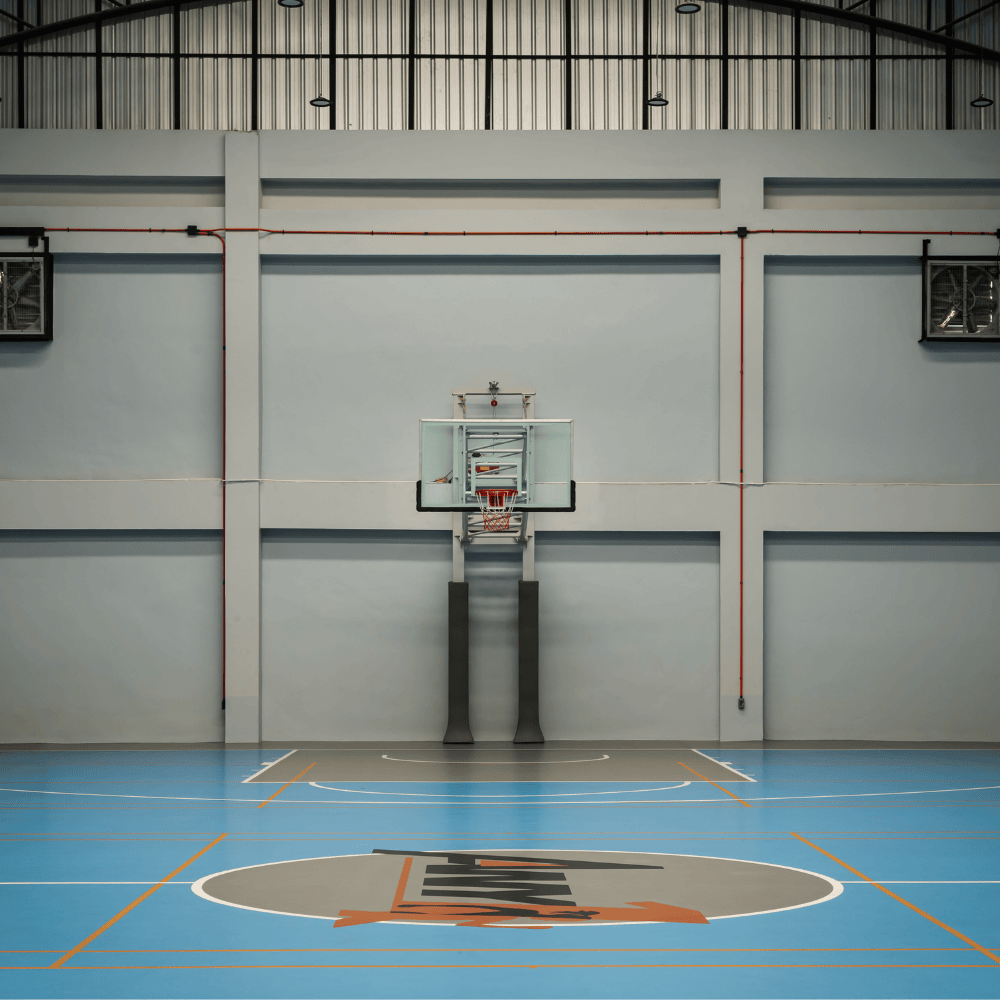The Importance of Proper Drainage and Surfacing in Basketball Court Construction
Whether for a community park, a school playground, or a private backyard, attention to these foundational elements makes all the difference.
A well-built basketball court is more than a flat surface with a hoop at each end. The key to a durable, high-performance court lies beneath the surface, where proper drainage and surfacing play essential roles in securing the court's longevity, safety, and playability. Whether for a community park, a school playground, or a private backyard, attention to these foundational elements makes all the difference.
Why Drainage Matters in Basketball Court Construction
Water is one of the biggest threats to a basketball court's integrity. Standing water can seep into the surface material without proper drainage, leading to cracks, warping, and eventual deterioration. Puddles also create slipping hazards, making the court unsafe for players. Effective drainage systems prevent these issues by directing water away from the court quickly and efficiently.
Proper drainage protects the surface and helps maintain consistent playing conditions. Waterlogged areas can cause uneven surfaces, affecting ball bounce and player movement. A well-drained court stays dry and smooth, allowing uninterrupted games even after heavy rain.
Designing Effective Drainage Systems
Creating an efficient drainage system starts with grading the site correctly. A slight slope—usually about one percent from the center to the edges—allows water to flow off the surface naturally. Perimeter or French drains can be installed to collect and channel water away from the court, preventing pooling along the edges.
Incorporating porous materials into the base layer also helps with drainage. Crushed stone or gravel beneath the court surface permits water to filter through, reducing the risk of surface damage. Proper grading with effective drainage materials verifies the court remains dry and functional year-round.
Choosing the Right Surface for Performance and Durability
The surface material of a basketball court significantly impacts its playability, safety, and maintenance needs. Asphalt and concrete are popular options for outdoor courts, offering durability and a consistent playing surface. These materials can be coated with acrylic layers, providing additional traction, UV protection, and color customization.
For indoor or high-performance courts, synthetic materials like modular tiles or cushioned surfaces offer enhanced shock absorption, reducing the risk of injuries. These surfaces also provide better grip and consistent ball bounce, making them ideal for competitive play.
Balancing Performance with Safety
Surface texture is crucial in balancing performance and safety. A surface that's too smooth can become slippery, especially when wet, while a surface that's too rough may increase the risk of abrasions and injuries. Textured acrylic coatings provide the right balance, offering grip without compromising comfort.
Shock-absorbing surfaces are critical in reducing the impact on players' joints. Prolonged play on hard surfaces can lead to fatigue and long-term injuries, while cushioned surfaces help mitigate these risks. Choosing the right surface material and texture supports peak performance and player well-being.
Maintaining Court Surfaces for Longevity
Regular maintenance is essential to keep a basketball court in top condition. Sweeping the court to remove debris, checking for cracks, and resealing the surface as needed help prevent deterioration. For courts with acrylic coatings, periodic reapplication maintains color vibrancy, surface texture, and UV protection.
Drainage systems also require occasional inspection and maintenance. Clearing debris from drains and looking for blockages verifies that water continues to flow away from the court effectively. Routine care extends the court's life and maintains safe, consistent playing conditions.
Enhancing the Court with Additional Features
Beyond drainage and surfacing, additional features can enhance the basketball court's functionality and appeal. Line markings, lighting, and fencing contribute to the overall experience, making the court more versatile and user-friendly. High-quality hoops and backboards, combined with proper surfacing, create a professional feel that attracts players of all skill levels.
Adding seating areas, shade structures, and water stations further enhances the court's usability, encouraging longer play sessions and community engagement. Thoughtful design and attention to detail update a simple basketball court into a vibrant hub for recreation and social connection.
Final Thoughts
Proper drainage and surfacing are the foundation of a durable, safe, and high-performing basketball court. By investing in prime materials and thoughtful design, recreational spaces can provide players with an exceptional playing experience while minimizing maintenance and extending the court's lifespan. Whether for casual games or competitive tournaments, a well-constructed basketball court becomes a valuable asset to any community, offering endless opportunities for fun, fitness, and connection.

